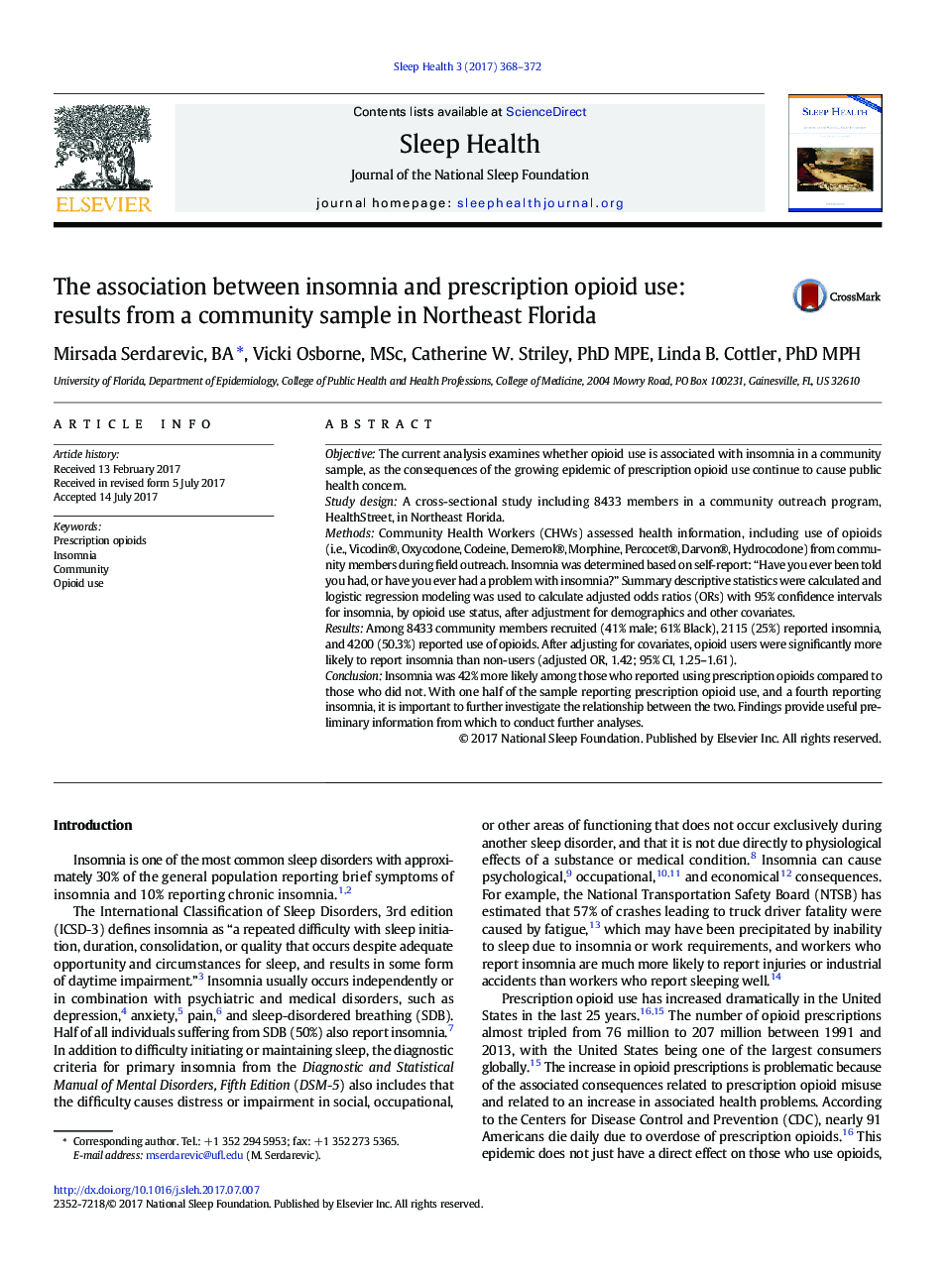| کد مقاله | کد نشریه | سال انتشار | مقاله انگلیسی | نسخه تمام متن |
|---|---|---|---|---|
| 5039493 | 1473331 | 2017 | 5 صفحه PDF | دانلود رایگان |
ObjectiveThe current analysis examines whether opioid use is associated with insomnia in a community sample, as the consequences of the growing epidemic of prescription opioid use continue to cause public health concern.Study designA cross-sectional study including 8433 members in a community outreach program, HealthStreet, in Northeast Florida.MethodsCommunity Health Workers (CHWs) assessed health information, including use of opioids (i.e., Vicodin®, Oxycodone, Codeine, Demerol®, Morphine, Percocet®, Darvon®, Hydrocodone) from community members during field outreach. Insomnia was determined based on self-report: “Have you ever been told you had, or have you ever had a problem with insomnia?” Summary descriptive statistics were calculated and logistic regression modeling was used to calculate adjusted odds ratios (ORs) with 95% confidence intervals for insomnia, by opioid use status, after adjustment for demographics and other covariates.ResultsAmong 8433 community members recruited (41% male; 61% Black), 2115 (25%) reported insomnia, and 4200 (50.3%) reported use of opioids. After adjusting for covariates, opioid users were significantly more likely to report insomnia than non-users (adjusted OR, 1.42; 95% CI, 1.25-1.61).ConclusionInsomnia was 42% more likely among those who reported using prescription opioids compared to those who did not. With one half of the sample reporting prescription opioid use, and a fourth reporting insomnia, it is important to further investigate the relationship between the two. Findings provide useful preliminary information from which to conduct further analyses.
Journal: Sleep Health - Volume 3, Issue 5, October 2017, Pages 368-372
